Motorcycle racing has existed since the very first engine was mounted to the very first frame and connected to the very first rear wheel in a “motor-bicycle.” Rough road courses were drawn up, and those early first pioneers would set out on timed runs. They were not, in the beginning, racing each other. They were racing the course.
During these early years, the Isle of Man, a tiny island in the middle of the Irish Sea, between England and Ireland, was a popular destination for tourism via ferries. As motor bicycles started to be called motorcycles, adventurous riders would bring their bikes over on the ferries and would time each other riding the roughly triangular main road that encircled the island.
In 1907, the racing was formalized and became the Isle of Man Tourist Trophy, or TT for short. Ever since then, it has been run every year, save for World War I and World War II, without fail. Originally starting with just one class, the 350cc class, it has expanded through time to encompass two entire weeks of racing at the end of May and the start of June, with the ultimate race being held on the final day. The race that everyone wants to win.
The 1200cc Senior TT.
The Space Between
The Isle of Man TT can best be summed up by a quote at the very start of the documentary: “Wherever we live and whatever we do in our daily lives, there’s always some inherent risk of death. On the Isle of Man, it’s just concentrated. These people are on the edge of death. ”
The TT intentionally does not have a large prize for the winners. The most serious race, the Senior TT, pays less than $25,000. The reason that professionals and privateers alike come every year is simple. There is nowhere else on Earth that you can ride on that line between life and death so vividly, so powerfully, without breaking several laws and maybe spending a lot of time in prison.
Dominic Herbertson – Privateer
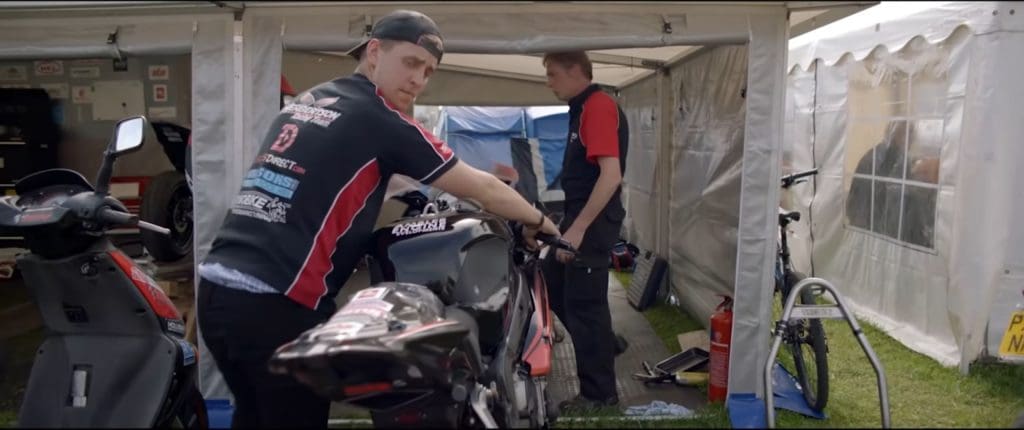
We meet young Dominic Herbertson at almost exactly 5 minutes into the documentary. A lumberjack by his day job, his ultimate goal in life is to become a professional racer, backed by a manufacturer with a large team. Within 30 seconds of meeting him, we also get one of the best descriptions, from the rider’s point of view, of what the TT is: “It’s 37 miles of pure pornography on a motorcycle.”
Unlike a large professional team, Dominic’s team consists almost entirely of family and friends. His father is a former TT racer and current Historic Parade rider, while his mother provides logistics, moral support, and the all-important food that keeps any motorcycle racer going. He works on the bike, he gets his hands greasy and dirty changing chains, sprockets, wheels, tires, and through it all he has a small van as his support area, his parents motorhome for daily work, and a small tech tent for working on the bike.
James Hillier – Team Kawasaki Pro Rider
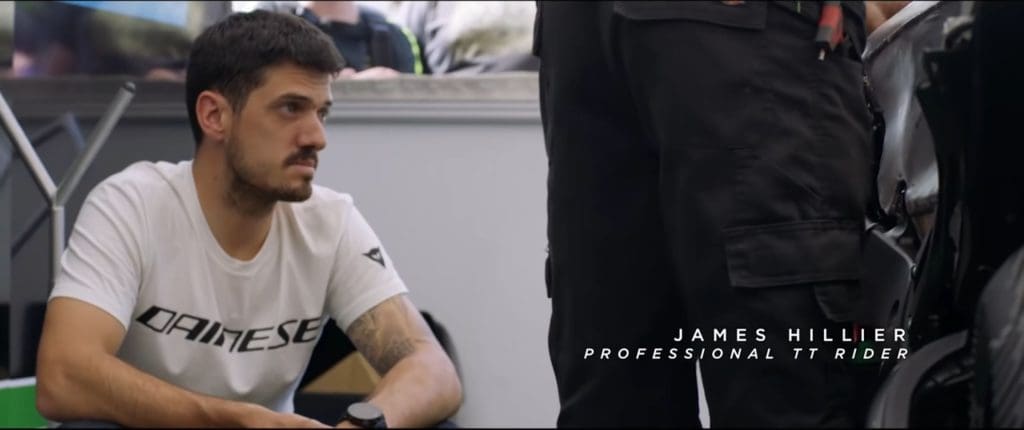
With some commentary from 2002 Isle of Man Lightweight TT winner Milky Quayle, we move from the young Henderson to the professional senior James Hillier. With full Kawasaki factory backing, he has a full crew of mechanics, two trucks of bikes and spares, a motorhome, a chef, a personal trainer, the works.
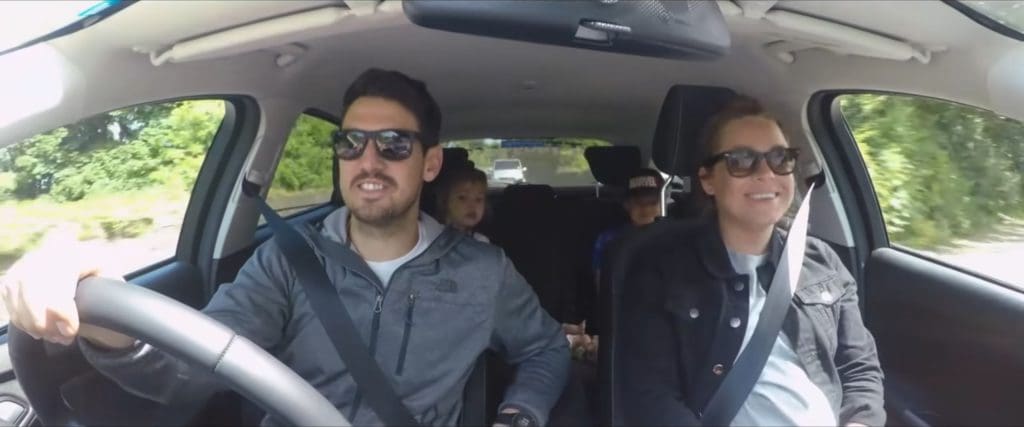
James also has a major difference from Dominic, in that he is married and has a family, with a son and daughter. While he realizes the stresses that running in one of the world’s most dangerous road races presents, he also has a goal and life lesson for his children built into the reason he continues to ride: “As dangerous as it is, I think it’s important to show my kids to chase their dreams.”
Risk VS Reward
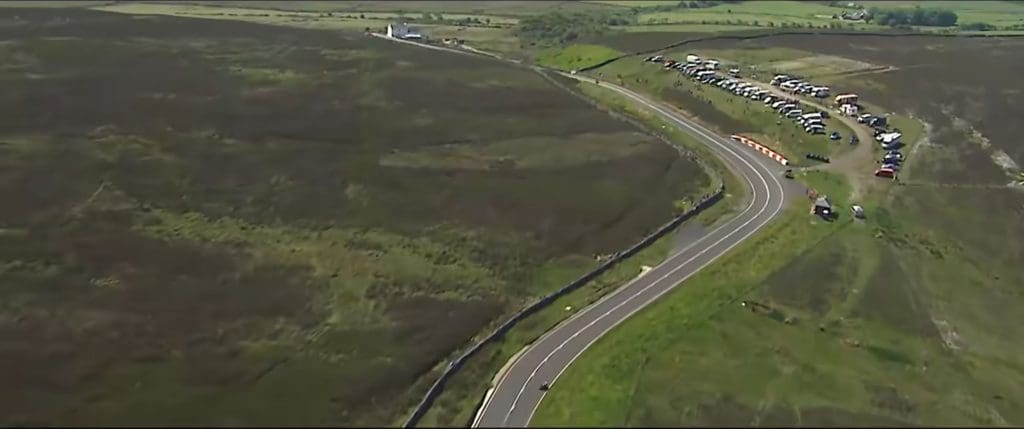
Both riders, however, are aware of the risk of the race. It is at this point that the documentary brings the vicious truth home, that if you make one mistake, one error, an inch or two too far to the left or right, it could very well be game over. This is shown by the crash that Milky Quayle suffered in 2003, during the Lightweight TT race. He clipped a wall on a high speed left hand bend, which dug into his arm and shoulder enough to rip him upright, his hands coming off the controls.
At nearly 160 MPH, he then slams into the thin, one-foot deep hay bales that line a stone wall. His bike shatters and Milky is launched, spinning through the air, clean across the road to bash into a stone wall, unpadded, on the left-hand side of the road.
The reality is brought even closer to home when he describes his injuries. The initial hit broke his right ankle. He broke his left shoulder and every rib on his left side. Those broken ribs then puncture his left lung, his spleen, and his kidney. He broke almost every finger on his left hand, almost all his toes, and as he puts it, “quite… a lot of stuff on that left side.”
He realizes he is extremely lucky to be alive. However, the crash ended his riding days in the race. Now, he works as a guide and mentor to new riders and junior riders at the TT, with the official title of “Rider Liaison Officer.” He shows them the course, explains both the good and bad, and hopes that his tips will keep those new riders and junior riders alive long enough that they can come back the next year to challenge the course, and themselves, again.
And then the nail gets driven home in the most brutal way. With an obvious somber tone in his voice, Milky says the one line that makes those moments between seconds mean something: “Every year at the TT, someone gets killed.” It’s why they race, it’s why they ride. They realize the danger, but they also realize that living on that knife’s edge is where the greatest moments, the most addictive feeling of euphoria exist.
This, ultimately, is what the documentary is about. As we travel through the 55-odd minutes, at multiple times it’s brought home that the risk is sometimes the reward itself.
The Racing: Part 1
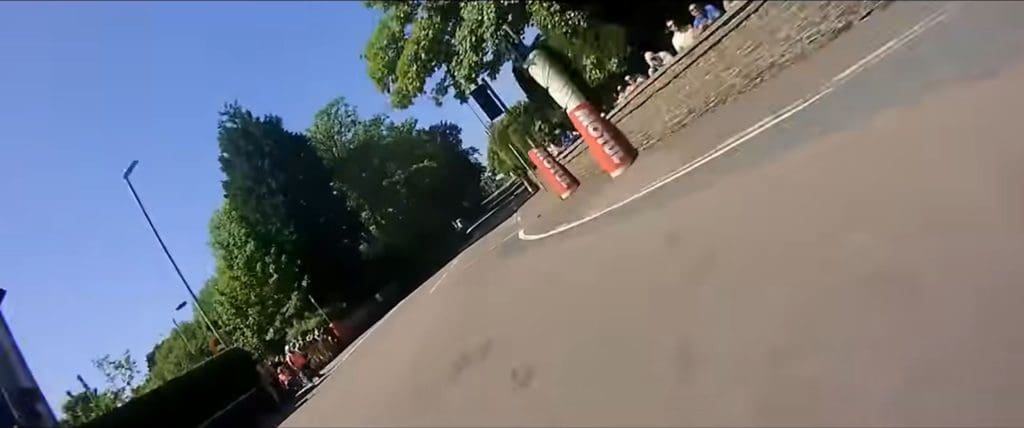
There’s a moment when Dominic disappears off the time tracking during the Superbike 1000cc TT race after roaring up through the times to be sitting 15th, and his father’s face tenses. He nervously fumbles with his phone, clicks his pen, even gets the look in his eye that something has gone hideously wrong. The tension is so palpable that you can almost feel the cold sweat at the back of his neck.
And then it all gets released when it’s revealed that he’s run out of fuel before his pit stop, which at the Isle of Man TT is every two laps.

A distraught Dominic doesn’t focus on the fact that he was pushing as hard as he’s ever pushed, and that he was at times inches from that mortal line. Instead, he focuses on what he can do to make sure the bike doesn’t run out of fuel for the next race. While obviously emotionally affected, he instead turns that rage and frustration into productive work, observing onboard videos from winning riders, chatting strategy with his father, and harnessing all the energy about the races that he can so that he can push even that little bit more.
We also learn that James, despite being a professional rider with a factory backing him, is also not immune to the dangers of the TT. In 2017, after screaming down the Ballahutchin Hill Straight at over 200 MPH, he braked lightly for one of the trickiest and deadliest corners of the race, Ballagarey, or as the riders have nicknamed it, Ballascary. It’s a 6th gear right-hand kink at nearly full throttle that is immediately followed by a crest that launches the bike into the air.
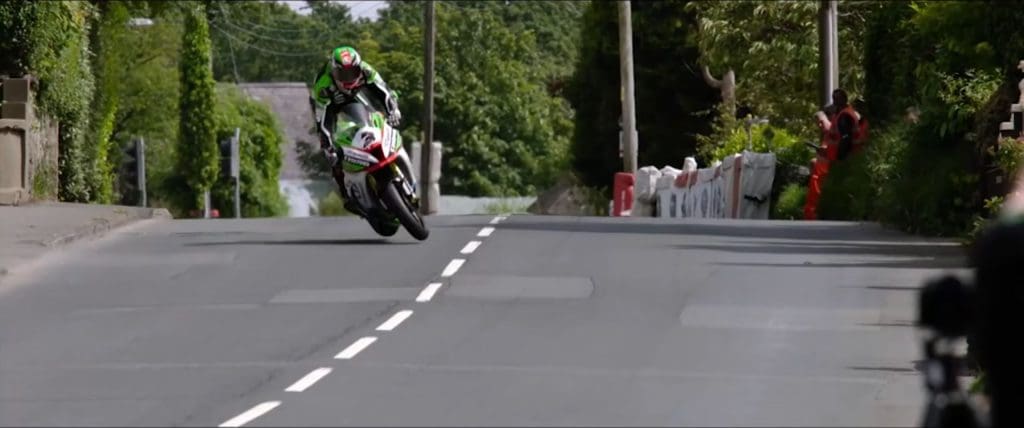
Many riders have died at Ballagarey, either from misjudging the severity of the kink and plowing off the outside edge of the corner or from clipping the inside curb and losing control at very near top speed.
The corner famously nearly killed Isle of Man TT legend Guy Martin, when in 2010 he clipped the inside curb with his rear wheel and slid out into a low side, his bike exploding after being fuelled at a pit stop minutes before. He broke his back and bruised both lungs, but escaped being burned as his inertia carried him through and past the fireball of his bike.
For his incident, James did not get the bike settled after the corner and the rear wheel skipped out just before the crest, launching him at an angle into the air at 160 MPH. In what is probably the single greatest instinctual save in the history of the TT, he somehow manages to throw his leg out to the side to counter the oscillation in the bike and barely loses any speed.
Life & Death
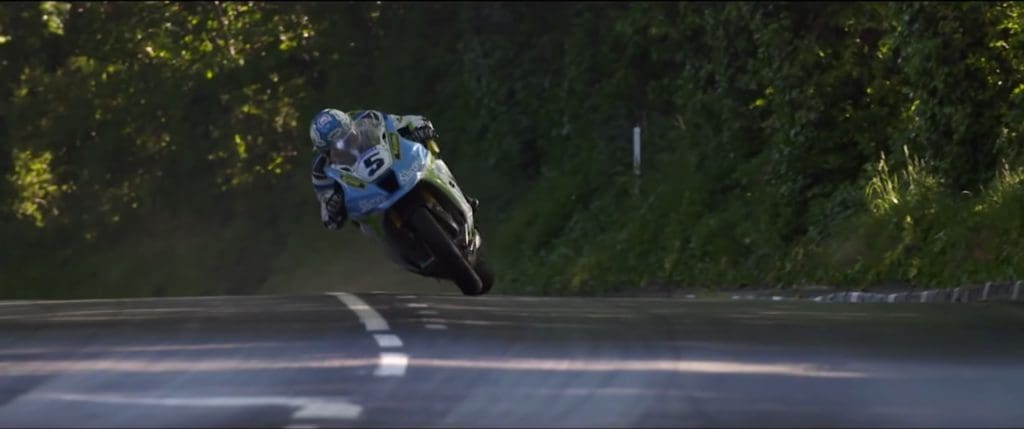
During practice, Isle of Man local and popular Superbike 1000cc TT racer Dan Kneen crashed in the Churchtown section of the TT mountain course. The section is notorious, with a series of incredibly fast but tight turns that lead into the town of Ramsey, and are located just a mile and a half before the famous Ramsey Hairpin that launches riders onto the actual mountain roads that make up a good half of the lap.
Estimates of his speed varied from 140 MPH to almost 190 MPH, yet the final result was still the same. Officially ruled a “death by misadventure,” he was the 147th competitor to die during the mountain course era of the Isle of Man TT.
For the common man, this would be enough to justify calling off the races entirely.
Yet, for the riders and the fans, that is the exact opposite of what they want to do. As Dominic Henderson says: “We are rattled. How can you not be rattled? We’ve lost a racer, a gentleman, and a friend, but you got to go out and you got to put that behind you.”
Again, it brings back those spaces between moments. All the riders knew that Dan Kneen died doing what he loved, challenging himself, the course, and gambling with every hedge, curb, stone wall, corner, and lamppost. To not race, to call it all off would be a disservice to Dan’s life, and so they put on their leathers, don their helmets, and go out on the course to continue the dance with death.
To honor the one who finally came to the end of his waltz, and now rests.
The Racing: Part 2
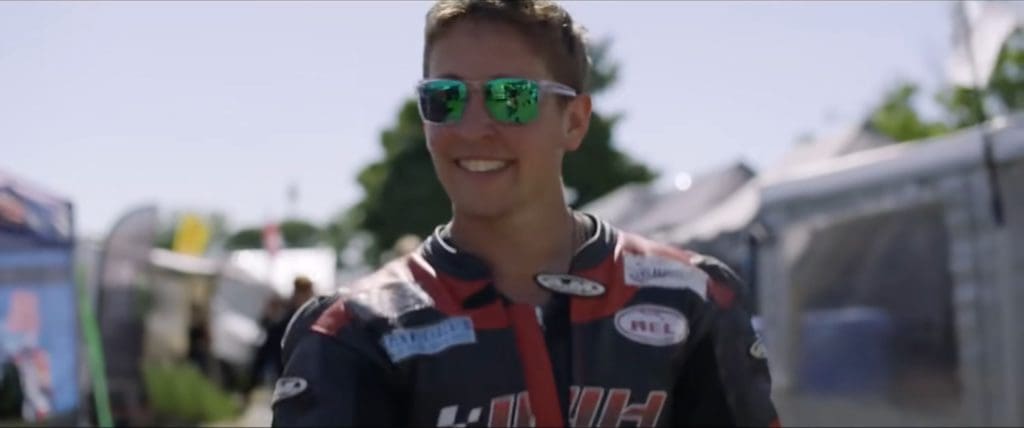
While James Hillier manages to place 3rd in the Lightweight 650cc TT race, the focus here is on Dominic Herbertson. After figuring out fuel issues, tuning his bike for the race over the course of the week, and pushing like an absolute maniac during the race, he achieves the first true victory of his career, placing in the top 10 of an Isle of Man race.
Despite the anguish of a death at the race, despite the frustration and rage at running out of fuel, there is a moment when Dominic is walking back through the paddock where he simply dons his sunglasses, smiles wide, and lets out a happy sigh. Maybe playing it up a bit for the camera, he also starts to get a little swagger in his walk, and honestly, you can’t blame him.
Riding the fine line he did, pushing himself to his limit, and staying just on the right side of it, he’s achieved a dream. Who wouldn’t let out a happy sigh as the adrenaline wanes away, time returns to normal, and you realize that you’re one of the best in the world?
And then it’s down to the big one.
The Senior TT
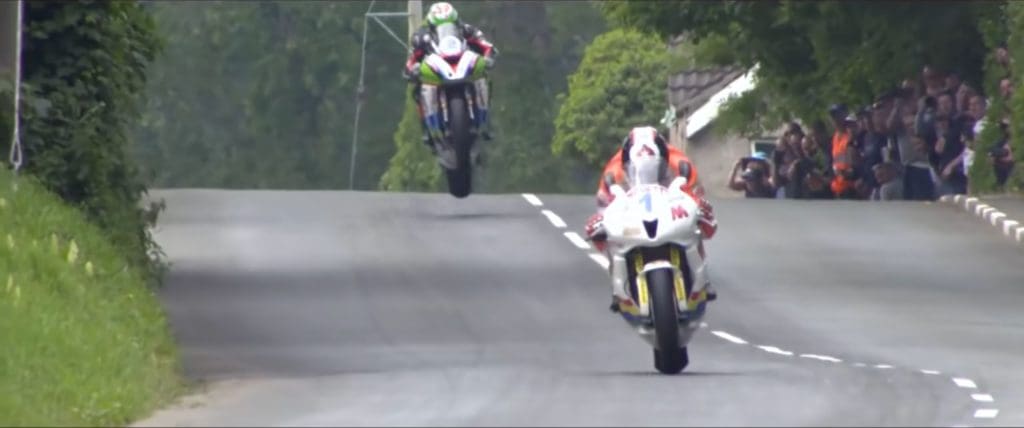
1200cc.
Average lap speed of over 130 MPH.
Every competitor from all the races entered.
This is the TT. This is the one everyone wants to win. This is the one where your name is engraved on the most important trophy, where you can become a legend or become a nobody in 222 miles of racing.
Of course, James Hillier’s entire life at the moment the Senior TT starts is focused on winning. On pushing the bike, and himself, to the absolute limit. To find those spaces between moments, where a millisecond is saved, an inch is taken closer to the apex, a throttle is held open a microsecond longer can mean the difference between first or not.
During the first lap, however, he comes soaring over a crest into a sweeping left-hander, and the bike compresses to the stops on the suspension. As well, the frame of the bike hits the tarmac hard, and the sound of metal snapping echoes out to the spectators, one of whom voices their worry with an “oooh!”
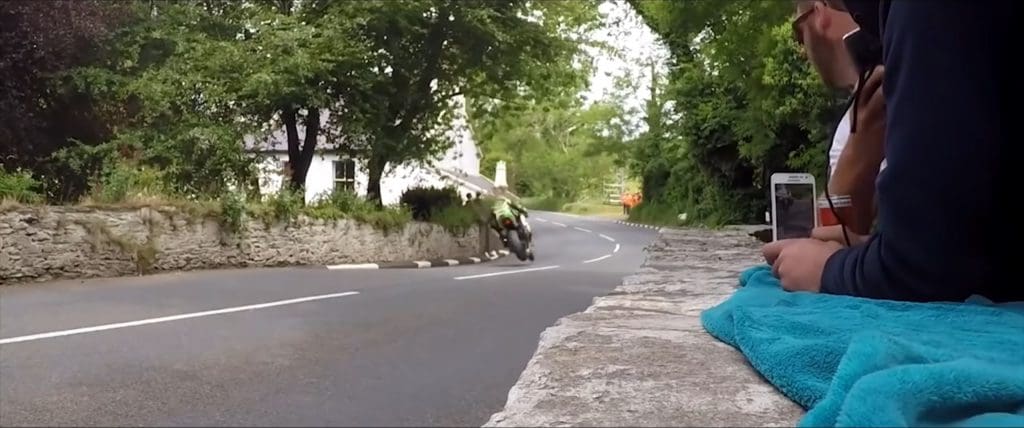
Hillier grinds to a stop, and before his challenge has even truly been mounted, he’s out of the race, having snapped open the bottom of his engine with the impact. It also has spilled oil almost directly on the racing line. There are videos out there of the riders directly after nearly losing control.
And then we are shown Dominic Herbertson’s bike camera, and the palpable sense of that fine line between life and death comes forth. Something about the way that there is no commentary, just the engine screaming and the scenery whipping by at impossible speed. The green blur and the grey blur melding onto a tunnel of narrow vision. The heart begins to beat faster when, out of nowhere, the bike heaves, jumps, and then is sent twisting and spiraling out of control…
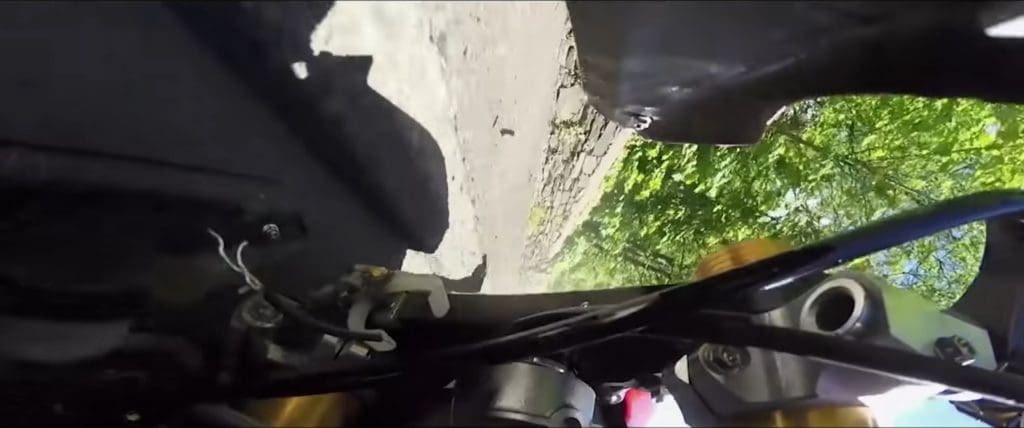
The Aftermath
When a rider crashes and needs medical transport, there is a very formal way of letting the team know what has happened. It consists of an official timekeeper, known only by his clipboard and/or notepad showing the number 29 on the back of it and nicknamed the Grim Reaper, visiting the team in the pits and stating simply “Incident” and telling the team where the rider has been taken by either ambulance or life-flight.
We join Team Herbertson as they drive in near-total silence to the main trauma hospital on the Isle of Man. There is the anxious walk to the emergency department, the fidgeting of sunglasses, phones, wallets, anything that can keep the hands busy.
The Senior TT wraps up in the background, yet the focus for all is on the news about Dominic Herbertson. No news is sometimes bad news, sometimes good news.
And then he says: “My biggest pet peeve is when people say this is a hobby… when was the last time someone died building a puzzle?”
And obviously loaded-up-on-painkillers Dominic grins madly for the camera and sips the quintessential cup of tea, quite literally. He explains what went wrong. Hitting a false neutral, losing the engine braking that racers so frequently rely upon, and then by the time he realizes he’s plum out of luck, he’s already hit the wall at impossible speed.
To add insult to injury, after he hit the wall, the bike landed on him, a hay bale landed on both, and as he puts it, he ended up in the “petrol pigeon” for a free airlift to the local hospital. Despite the morphine coursing through his system to numb the pain from the multiple fractures in his left arm, he quite confidently states he can’t wait to come back in 2019 as he knows what happened, where he went wrong, and what to do about it.
Or, as he succinctly puts it: “Still love this place. This doesn’t put me off one bit.”
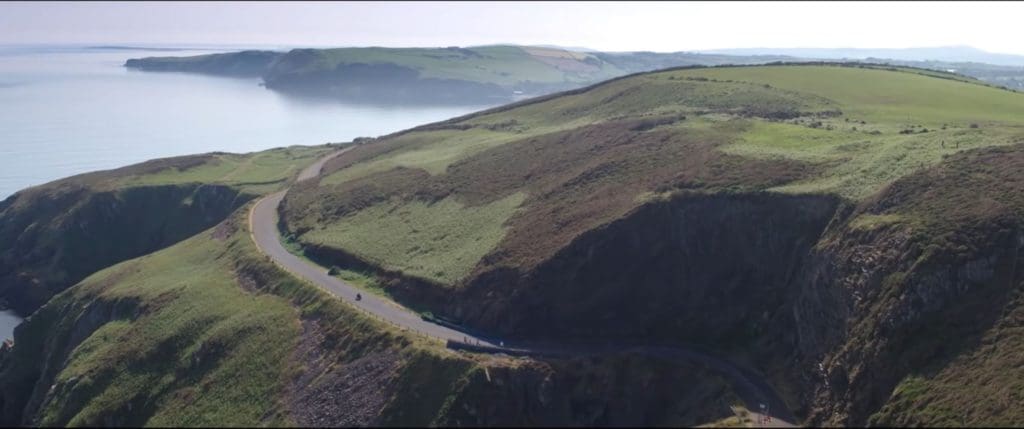
The TT wraps up after that, with the 2018 Isle of Man TT having set records for fastest average speed on a lap during the Senior TT, and attendance across the entire two weeks at one of its highest points ever in the history of the TT.
Unfortunately, the 2018 TT also saw three deaths.
But, as Dominic says as he rides one of the seaside roads as the documentary ends: “This place makes you love life, makes you love living. That’s what it’s about, isn’t it?”
We all feel the same, we riders, maybe expressed in different ways. But the ultimate truth about why we ride, why we swing a leg over two wheels with an engine in between them, is to live life that little bit closer to the edge. We take the risk that others aren’t willing to. There is that inherent, real danger to riding.
But, without the risk, would the feeling of riding be as glorious, as liberating, as it is?

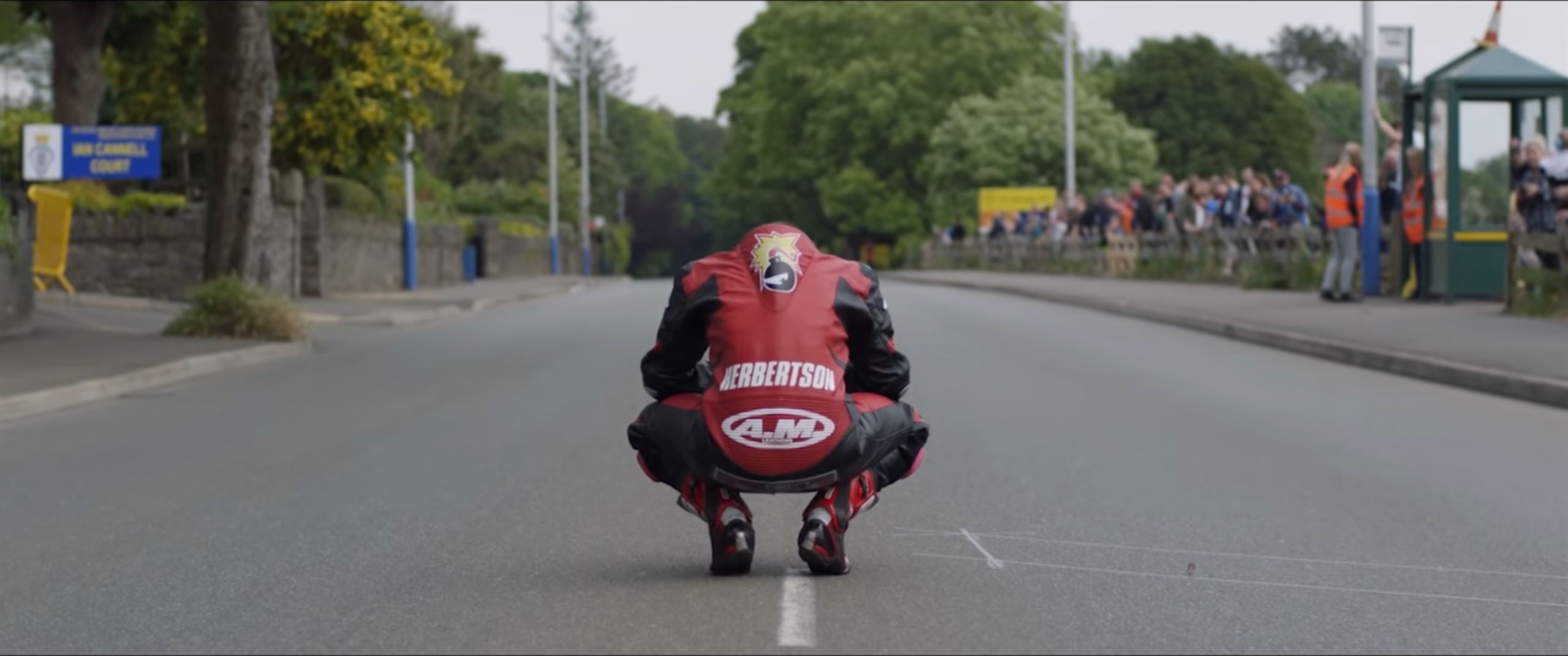

Every bike rider should witness this event. A great showing of skill by some of the best riders in the world. There is nothing else like a true road course to test you.
Has to be seen to be believed ,been to 55 meetings and still get blown away , awsome
Whos this henderson guy .get facts right .